01.05.2013: It’s time to think about flying back to Switzerland. As the weather looks ok for tomorrow, but less good for the end of the week, I decided not to wait longer and to fly back tomorrow. I did my flight planning today, with stops foreseen in Flensburg and Kassel-Calden. I called Flensburg for customs for tomorrow, but they told me that I don’t need customs, nor passport control for flight within the EU. Cool, I didn’t know that.

02.05.2013: We got up early this morning, and arrived at the airport in Roskilde at around 8. I prepared my plane, opened a flight plan and got ready to depart. The staff at Roskilde was again extremely friendly and helpful, and I only had to pay around 90 CHF / 70 € for two landings plus one week of parking That’s really not expensive for a controlled airport which only serves business jets.

I left Roskilde CTR direction south-west through Borup, from where I headed towards Korsør.

There I saw the bridge again, but this time from the south side.

Korsør is one of the two major bases of the Royal Danish Navy, and there were quite a few ships in port.

Below another view of the suspension portion of the bridge…
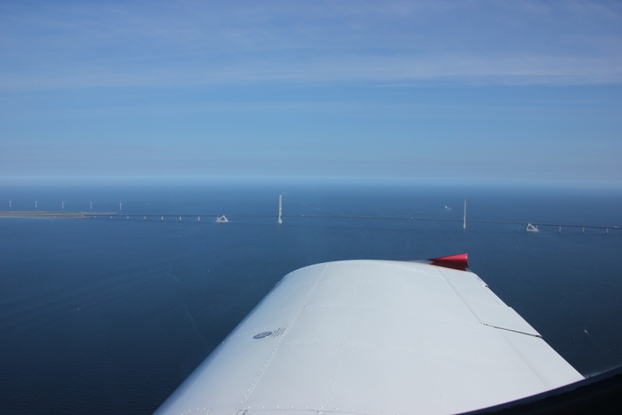
…as well as of the western elevated concrete section, which is nearly 7 km long.

Over Fünen I saw quite a few nice castles, as the one below. I will try to find out whether any of them has a little airstrip.
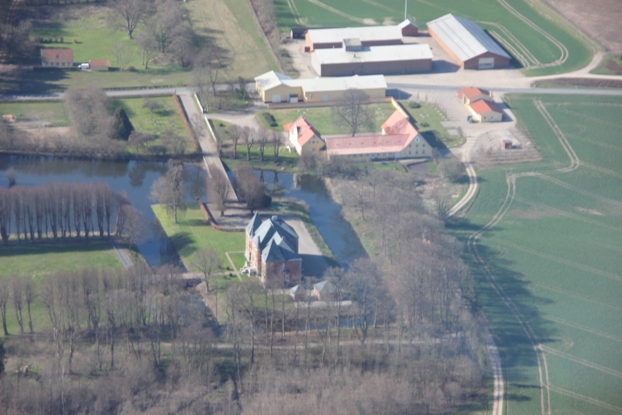
From Fünen I crossed the Lillebaelt direction Flensburg.

That’s another 20 km or so over water, but with a number of small islands along the way.

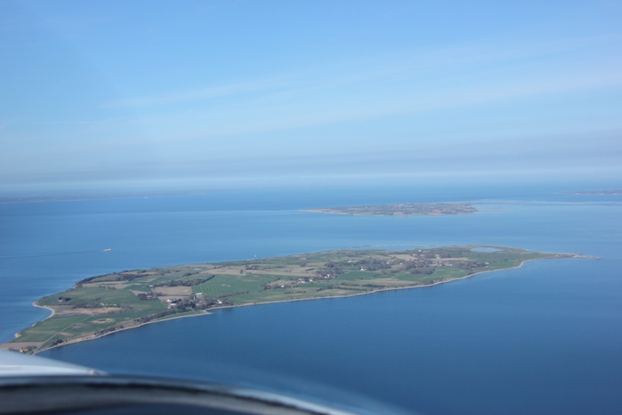
Below a view at Aerø, another island with an airport. I will try to stop there on my next excursion to Denmark.
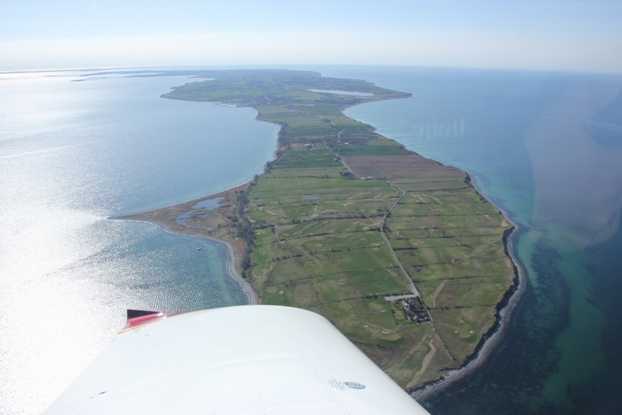
There is a nice lighthouse on the northern tip of Aerø, probably worth a visit too..

Out in the Lillebaelt I saw another light house, which was just being serviced. There was a small boat tied to the light house,…

…with a larger boat waiting a bit further away.

Soon after reaching land again I saw Flensburg in front of me, again easy to find as it is located at the end of a small fjord.

Flensburg airfield in located south-west of the city and quite easy to spot.

I landed a little more than an hour after departing from Roskilde in around 10 kts of crosswind, but that was no problem I then refuelled and continued after only a short break.

When getting ready to start the engine I heard a strange noise overhead, which came from two Tornado aircraft passing surprisingly low straight over the airfield.

Shortly after leaving the circuit I passed a former military airfield called Eggebeck, which has been transformed into an 80 MW solar park. One can still see the runway below the large array of solar panels.

I the followed various winding rivers, which are easy to spot but difficult to distinguish from one another as they all look the same. The water doesn’t really seem to know in which direction it shall flow here, which is no surprise as the land is as flat as a table.



I reached the Elbe river near Brunsbüttel,…

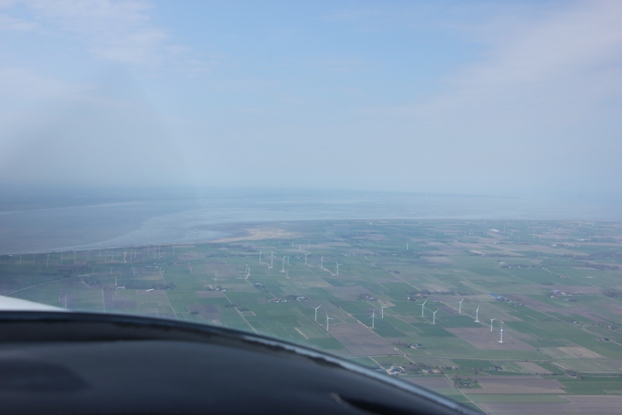
…which is also the western end of the Nordsee-Ostsee Canal. The locks where clearly visible from the air, even though the visibility started to deteriorate.
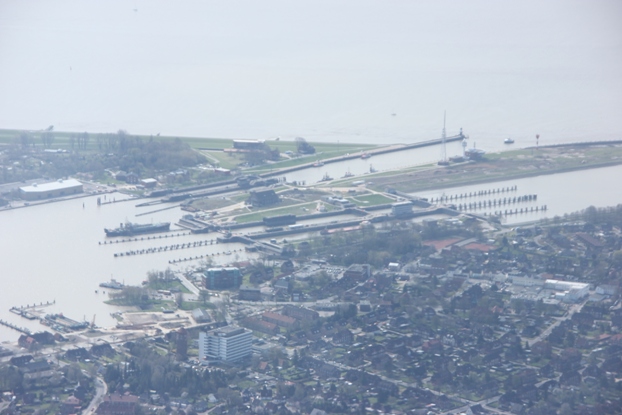
I then followed some other landmarks, such as this TV tower,…

…followed by more of the winding rivers…

…and some strangely looking lakes.


I passed east of Bremen CTR and west of Hannover CTR, where the clouds were as low as 3’000 ft and the visibility maybe 5 km. I was constantly looking out for diversion airfields, such as the one below, but as the cloud base and the visibility did not get worse I could continue. My poor visibility flight training of a month ago was clearly paying off as conditions were still within my comfort zone.

After about two hours I reached Kassel-Calden, a newly build airport adjacent to the now closed old Kassel airfield. According to the internet the new airport costed 270 Mio € and went into operation on the 4th May, so less than a month ago.

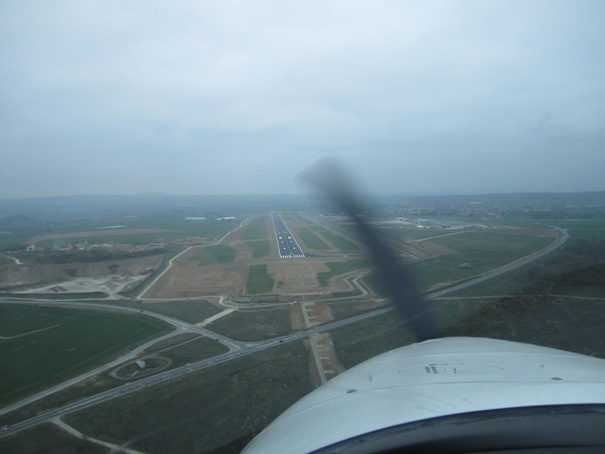
The airport has been designed for charter operations, but so far no airline seems to want to fly there. This did not matter to me, however, as the service was excellent and the landing fee only 7.08 €. When I mentioned Kassel as my destination in Flensburg the guy in the office just made a very dry comment “Thanks to you they have at least one plane movement there today”.

I first hesitated whether I should continue, as the weather forecast for Switzerland predicted towering cumuli and heavy rain showers, but a phone call to Lommis corrected this. I therefore activated my customs notice for a direct flight to Lommis, with an arrival time of 16:30, and left Kassel again. Kassel has a two-hour notice for departures to non-EU countries, but I did not want to wait for that long due to the deteriorating weather, so the friendly lady at the office called customs to see whether they let me depart immediately. I heard her say “he looks innocent…” on the phone, which made them clear me for immediate departure. I haven’t heard anybody describing me like that.
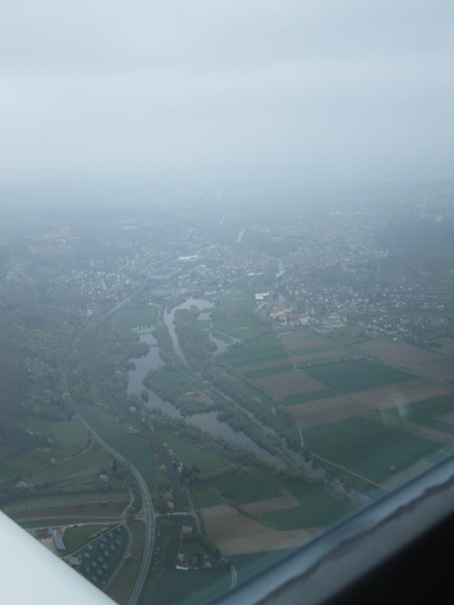
The visibility did not improve first, but it also wasn’t worse than before. I also go excellent traffic information from Langen, including regular updates on the position of a Super Puma helicopter that was flying the same route as I did. I continued keeping an eye on possible diversion airfields, such as the one below, but conditions started slowly to improve.

A bit later I flew over a large antenna installation located in a restricted area, which was however not active. I did not even have to ask whether it was active, as the guy in Langen continuously informed me about all restricted areas that were anywhere near my planned route as soon as I got close to them. He probably had nothing better to do, as traffic was quite light (no wonder).
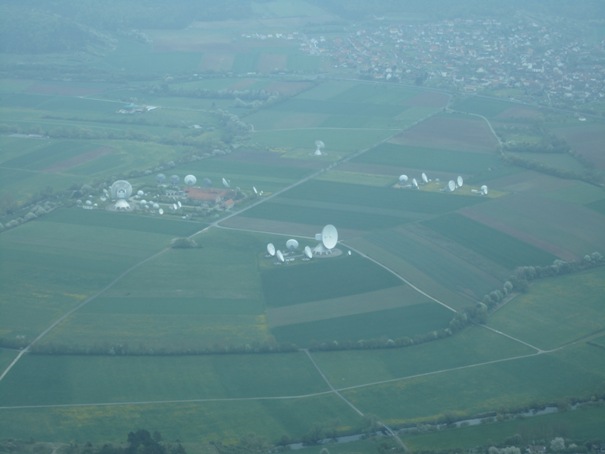
I later found out that the installation is called Erdfunkstelle Fuchsstadt. It is the main ground station of Intelsat. It was the most important node of the world’s phone network until fibre optic cables largely replaced satellite links. There are however still more than 50 parabolic antennas, two of them with a diameter of more than 50 m. The internet claims it to be the largest satellite ground station in the world.
I then continued towards Ulm, and I could already see the 161 m tall tower of the dome from many miles away (below a picture I took with my zoom lens, the actual visibility was better).

Here a better picture of the dome, it is definitely an impressive building.

The planned flying time to Lommis was 2:40, but in Ulm I noticed that I would be ahead of time (the Garmin 695 shows you the predicted arrival time for each waypoint, as well as for the final destination). As customs don’t like it when you arrive early I decided to reduce the speed in order to arrive just in time. The airlines do he same, as they can save quite some fuel but still arrive on time.

After Ulm the weather improved significantly, so I could climb from 2’500 ft to 4’500 ft for the rest of my flight. From Ulm I flew directly to Constance, passing the Federsee which is around 2 km long and marked on the Jeppesen card. There I could see blue sky, but also some quite large cumulus clouds.

Soon afterwards I could see the Lake of Constance, and from there it was all known territory.

Below the Mainau island,…

…and then again from a bit closer.

Near Constance I was handed over to Zurich Information,..

…and after some odd questioning by Zurich Information I manage to convince them to close my flight plan. I arrived overhead Lommis at 16:29 and landed exactly on time. Police was waiting to check my ID, which they sometimes do, but they were very friendly.
That was definitely a great trip, the longest one so far in my plane, and also the longest one I have ever done alone. The SportCruiser is definitely a great plane to travel. Here some statistics about my tour to Denmark (excluding the local flight in Denmark):
Flight leg: Distance [nm]: Planned flight time: Actual flight time: Average speed [kts]:
EDFC 167 1:36 1:39 101.2
EDHL 243 2:19 2:26 104.9
EKRK 128 1:19 1:17 99.8
EDXF 107 1:02 1:10 91.7
EDVK 210 2:02 1:59 105.9
LSZT 263 2:38 2:31 104.5
Total 1118 11:02 101.3
A rough calculation of the fuel consumption shows that I consumed around 17 l/h. or 95 l each from Lommis to Roskilde and back. By car its 1170 km, which would mean 8 l/100 km, or 12.5 km /l.
08.05.2013: Today I flew to Rome for a business trip, but not with my SportCruiser. Instead I flew with Swiss, which was a good choice. In Zurich we had nice weather, as can be seen below….

…but the alps were all in clouds.
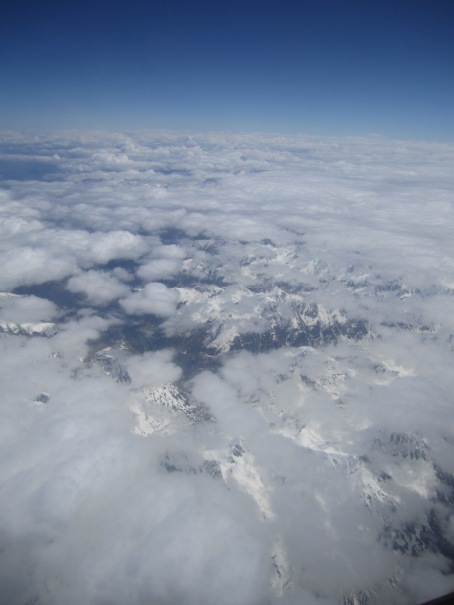
The clouds cleared up the closer we got to Rome,..
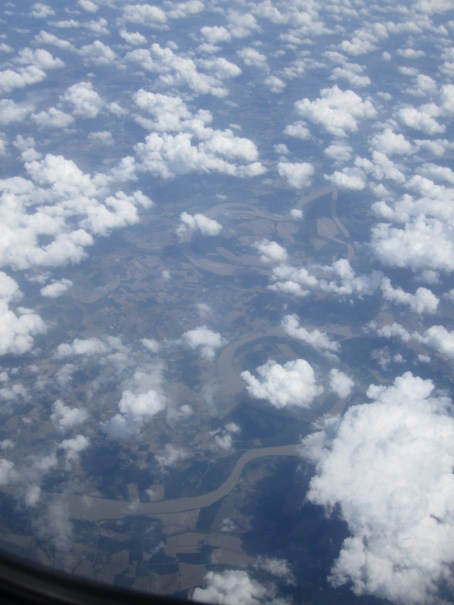

..but around Rome itself the pilot had to fly around some quite impressive CBs.
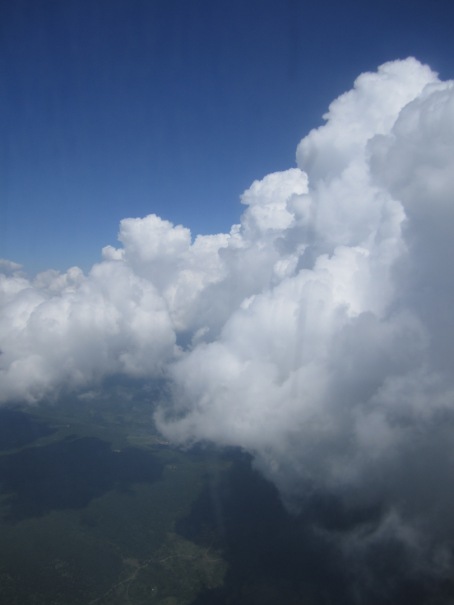

I took the train from Fiumicion airport to my hotel, and we passed Ciampino airport, one mostly used by budget airlines.

In the evening I read on the newspaper that the US foreign minister was visiting Rome, and when having a closer look at the picture above I noticed that Airforce Two was parked in Ciampino.
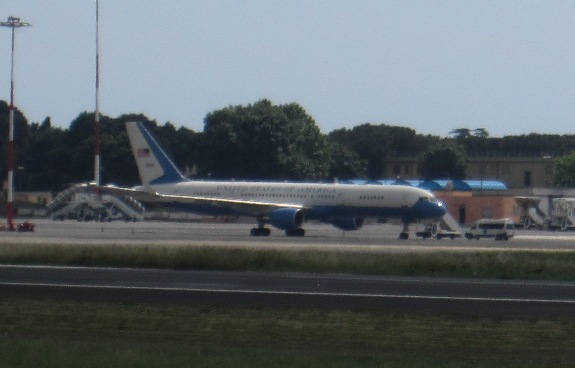
10.05.2013: Today I flew back, leaving Rome later in the evening.


Some distance up the coast I saw the island of Montecristo, famous from the novel “The Count of Monte Cristo”,…

…followed by the island of Elba, with the airport of Marina do Campo, to which I flew some years ago with a fiend in a Piper Archer.

Below a view at the village of Marina do Campo, with the runway of the airport visible in the centre.

We crossed the alps in the clouds, but later had an amazing view when we flew between two layers of clouds with the sun visible in the far distance.
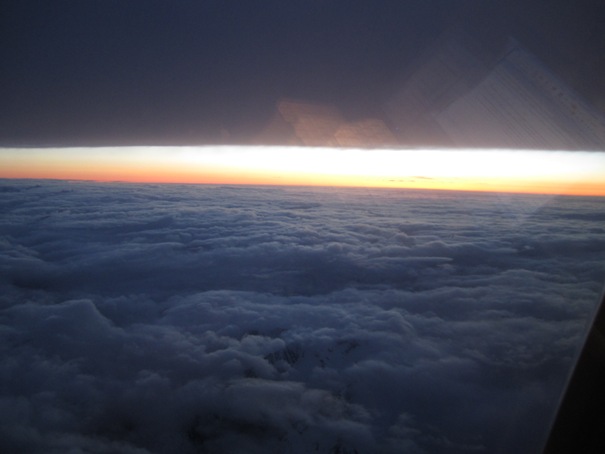
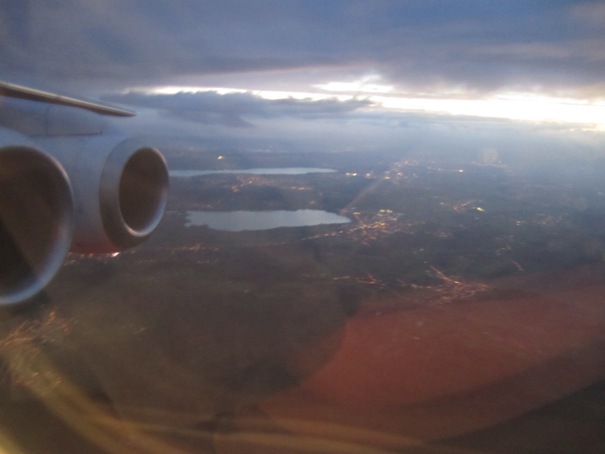
14.05.2013: I went flying with friend today who also owns a SportCruiser. We did a little tour from Mollis, a former military airfield in the mountains which has been transferred recently to civil use only. The runway is however still a clear sign of its former use.

Mollis lies in the deep valley of the canton of Glarus, so the circuit is surrounded by very steep mountains.
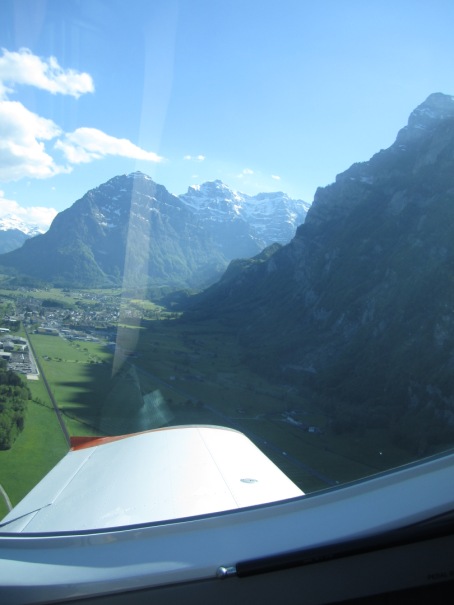
The runway lies to the right, just behind the forested ridge, so one does not see it until short final.


Below a view on the airfield from some distance.

We did a tour into the mountains,…
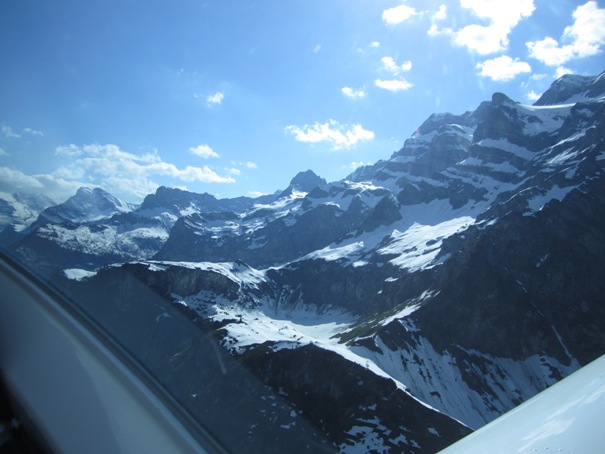
…looking at what is claimed to be the most luxurious mountaineering “hut”,…

…and just enjoying the scenery.

When we returned only an hour later, half of the airfield was already in the shadow, at that was only around half past five local time.

Comparing this picture with the similar one further up one can see the drawback of being in a steep, north south oriented valley.
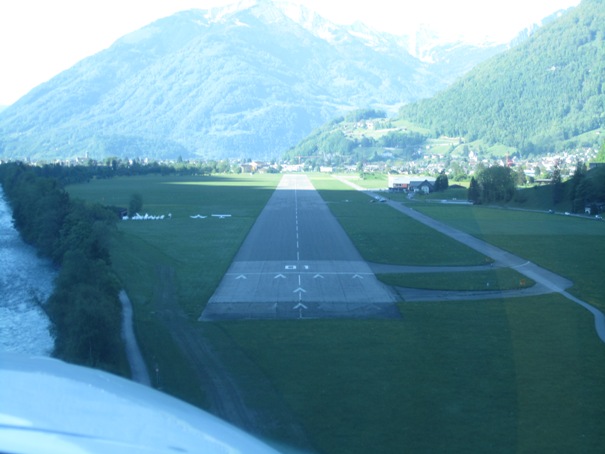
18.05.2013: It has been the lousiest spring in decades, with 40% less sun than average so far, but when I got up this morning I saw this (well, not from my house, unfortunately):

I had to go shopping first for the longer weekend, so I was one of the first customers in the supermarket, but shortly after 9 I was at the airport. Below a view south towards the mountains.

I decided to fly to Buttwil (LSZU), as they have bought our club’s Cessna 150 recently and I still had to bring them some documents.

Buttwil lies roughly 20 km south-west of Zurich, so I flew along the lake of Zurich…

…then past the City of Zurich…

…and from there towards Buttwil. It’s an airfield similar to Lommis, with a grass runway of around 500 m length.

Below a picture of the airfield I took shortly after takeoff.

From Buttwil I flew over Emmen airbase, which was closed with it’s CTR/TMA not active,…

…and then towards the Lake of the four Cantons…

…and over the City of Lucerne.


I then turned southeast, heading toward the Tödi, the highest mountain in that part of the alps. It was Föhn, a wind from the south which results in rain south of the alps, but very warm temperatures in the northern valleys, as can be seen on the picture below. I heard in the morning that they had a 14 km traffic jam in front of the northern portal of the Gotthard tunnel, but from what it looked from above heading south was the wrong way to go.
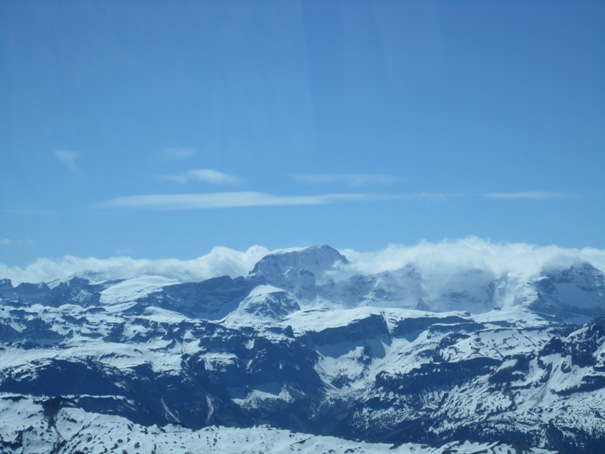
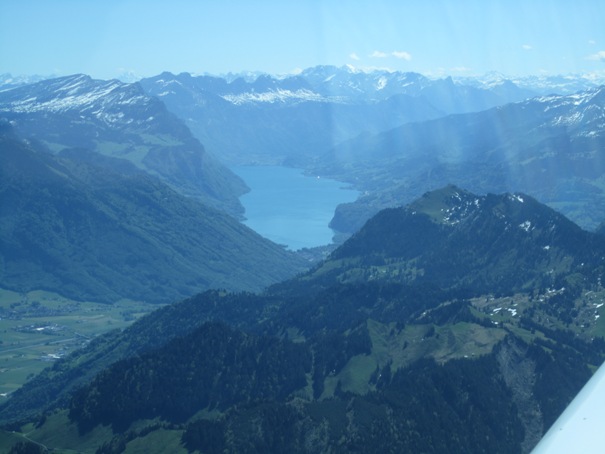
After landing back in Lommis I saw this nice trio of planes parked in front of the hangar, three generations of aircraft.

20.05.2013: Already yesterday the weather was not as bad as predicted, which was again the case today. I therefore decided to make another little tour, just for the fun of it. First I flew towards the lake, but it was quite bumpy at lower altitude.
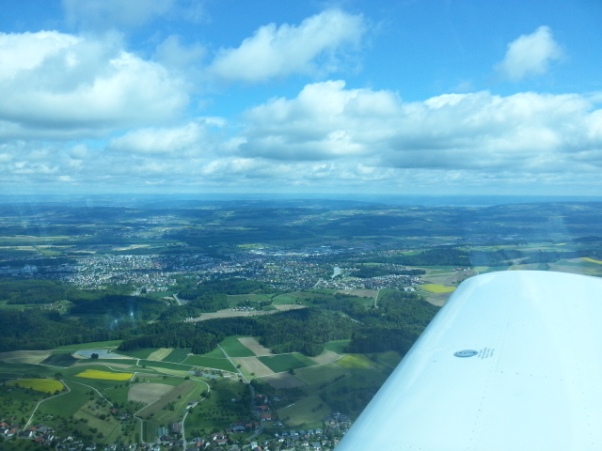

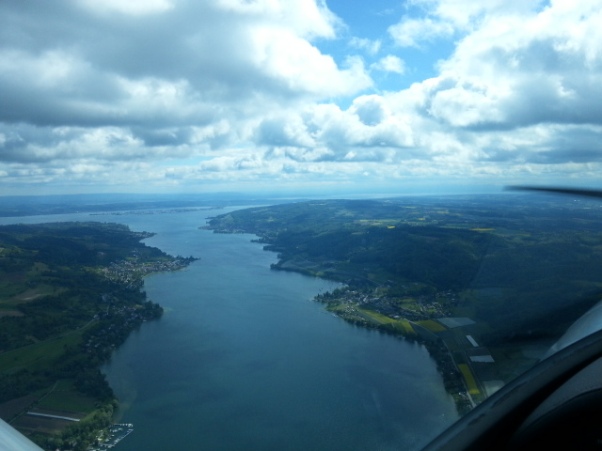
I therefore decided to turn towards the mountain. In the east it looked quite grey…
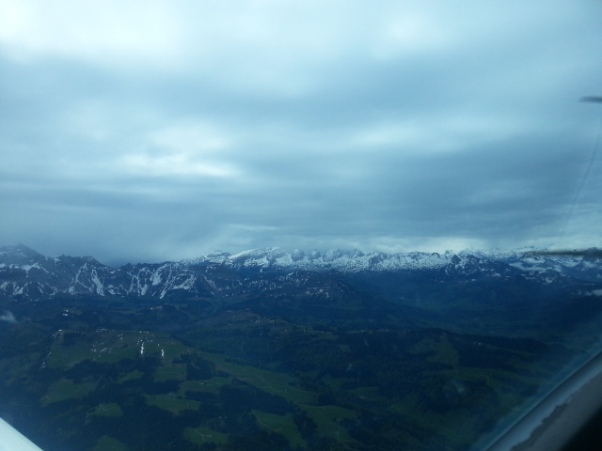
…but a lot better towards the western parts of the alps.

It was quite cold, at 8’500 ft / 2’600 m it was 0 degrees. There is still snow down to around 1’600 m (5’000 ft), unusual for mid May.
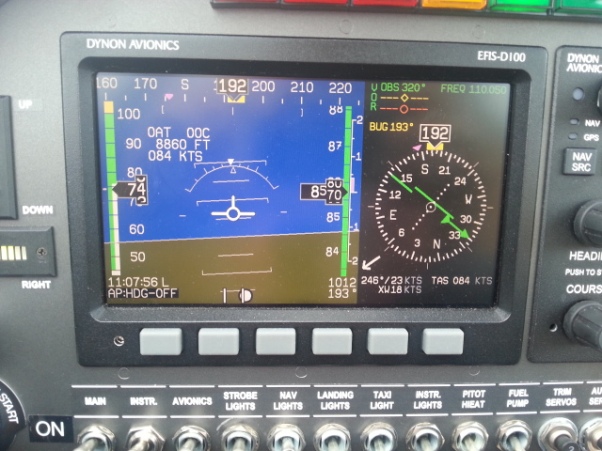
I climbed to around 10’000 ft, where it was nicely calm, with a nice view along and into the mountains.

Flying deeper into the mountains I met quite some clouds, with the southern parts completely blocked. This weekend it was definitely better to stay north of the alps than going south.

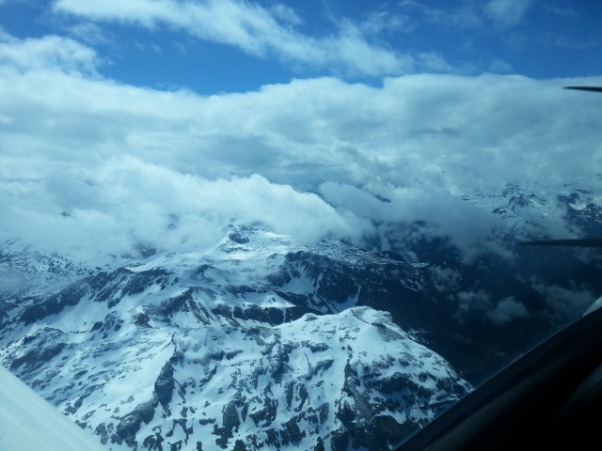
When flying back it started to clear up even in the plains.
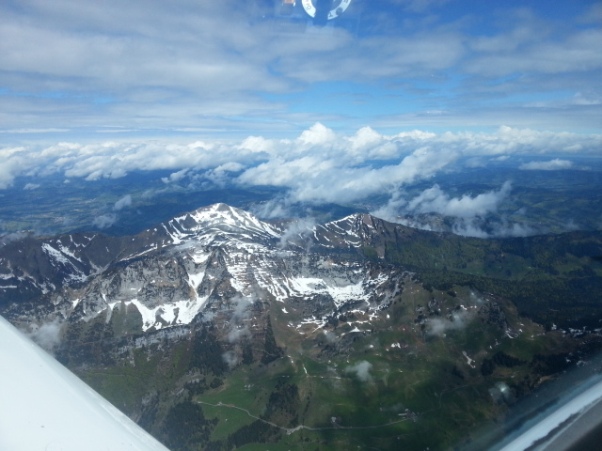
Even though it was very calm at 10’000 ft there was quite some wind, resulting in a ground speed of around 130 kts.
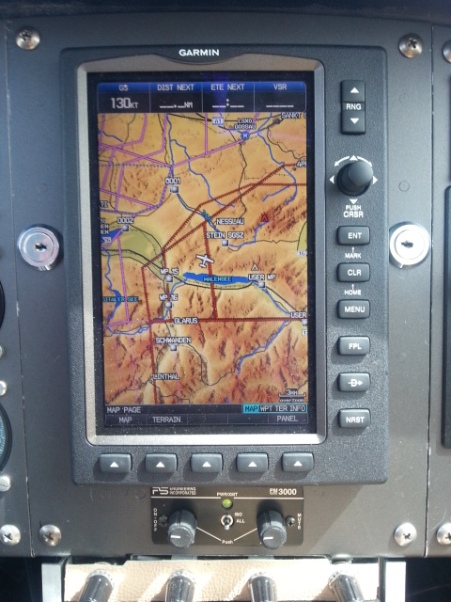
After landing I detected some streaks of a bluish liquid at the cowling gap, so I put my plane straight into the maintenance to have a closer look tomorrow. l removed the cowling, but I could not detect anything.
20.05.2013: Today I had a closer look at my engine together with one of our mechanics. We first suspected a leak in the water cooling system, but the leakage test confirmed that the system is tight, we also could not find any visible leakage. We then suspected a fuel leak, and after a lengthy inspection Silvan detected a small leak at the fuel pump.
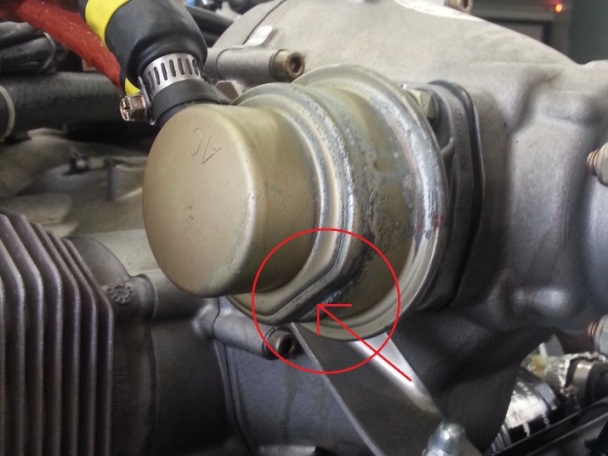
That’s quite an odd location, it is the casing that is leaking, not any of the fittings. At least this is no major issue to repair, I will just have to replace the fuel pump which shouldn’t be too costly, and is also very easy to do. I noticed that Rotax replaced this type of fuel pump with a newer design some time ago, so I will try to get one of these tomorrow.
22.05.2013: I took the train to Grenchen this morning to fetch a new fuel pump at Aerotec, the official Swiss distributor for Rotax engines. I could also have flown there, but not with a faulty fuel pump, and also not in this weather with rain and a cloud base at around 2’000 ft. I might have mentioned it already, this is the worst spring we ever had, they even announced snow down to 500 m above sea level for Friday (I live at 450 m).
The new fuel pump looks quite different from the old one, with a cast aluminium metal case instead of the old one which was formed from sheet metal. The new one was introduced in 2011, but without a requirement to replace the existing ones.
The distributor was quite surprised that the old pump had only lasted 150 hours, and also about the signs of corrosion on the casing. He even questioned whether the pump was originally installed on this engine, and promised to verify this once I send him the serial number.
Below a picture of the old fuel pump…

…and the new one. Changing it is very simple, there are only to screws used to attach it to the gearbox. The screws are however difficult to reach, luckily Silvan had some cranked wrenches that made it a bit easier. If you don’t have them it might be necessary to remove the water cooler to access them.

The new pump has an overflow drainage, to which a drainage tube has to be connected. That’s the transparent tube below the fuel pump.
I will perform a test run tomorrow or Friday.
23.05.2013: I did my engine test this morning, all looks ok with the new fuel pump. I decided to also make a short test flight, even though the weather was marginal. It was only 6 degrees and the weather forecast predicted snow down to below 900 m. And I was right with “marginal”, already at the circuit altitude of 2400 ft it was snowing.
I tried to fly to wards the mountains to check how far down snow fell, but the clouds were just too low, as can be seen below.

It looked better towards the lake, so I flew there instead. I did however not go very far, as even lower clouds came in, and when I landed back in Lommis I had to avoid some small clouds on the circuit.

There were no signs of leaking fuel after the flight, but as it was raining I will probably have to check again after the next flights whether changing the fuel pump cured the problem. I decided to give my plane a thorough wash before putting it back into the hangar. Silvan once told me that washing the plane in light rain is best, as the rainwater does not contain chalk and therefore does not leave stains. Having tried it I have to say he was correct.
